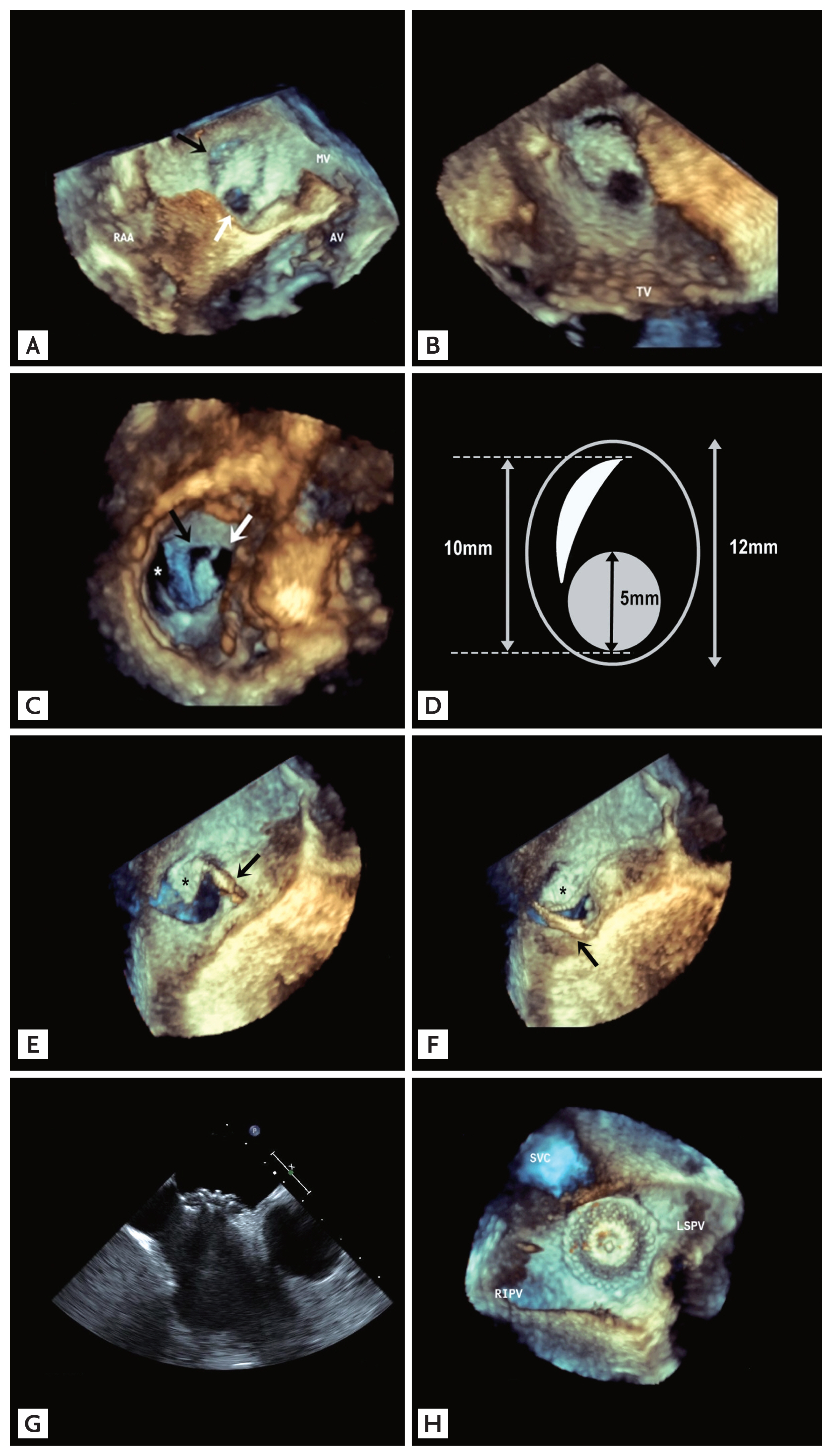A 60-year-old male patient was admitted for exertional dyspnea. Transthoracic and transesophageal echocardiogram (TEE) revealed secundum atrial septal defect (ASD) (Fig. 1). The defect was oval shaped and about 10 mm in the maximum diameter. However, shunt flow was observed as dual jet by Color Doppler at a certain degree view by TEE, suggesting multi-hole morphology, while transthoracic echocardiogram and computed tomography did not suggest any complexity of the defect. Double fenestrations of the interatrial septum (IAS) were clearly observed by real time three-dimensional (3D) TEE (Fig. 2 and Supplementary Videos 1 and 2). The deformity had two holes, one of which was round, close to the aortic rim, and in a relatively low position, while the other was crescent shaped and in an upper position. Each defect was about 5 mm in size. Multi-fenestration is a well-known hurdle to transcatheter ASD closure. A small additional defect adjacent to the larger one can also be closed by single device implantation through the major defect. However, in this case, it was difficult to select a closing strategy because single instrument does not guarantee all-encompassing closure for both sizable defects.
The heart team chose a 12 mm-diameter Amplatzer Septal Occluder (Abbott, St. Paul, MN, USA) and determined cannulation to the round hole, considering which one was mechanically durable and anatomically fit to the device neck. Wire crossing to the round hole was performed successfully under real time 3D TEE guidance. Thereafter the occluder was deployed uneventfully (Supplementary Videos 3 and 4). Shunt flow was resolved without structural deterioration of IAS after device implantation.
This case illustrated unique ASD images viewed from various positions. 3D TEE is a highly informative and superior image modality for display anatomy of complex ASD and real time guidance of transcatheter closure. In conclusion, similar sized-double ASD can be treated with a single device under real time 3D TEE guidance in selected cases.





 PDF Links
PDF Links PubReader
PubReader ePub Link
ePub Link Full text via DOI
Full text via DOI Download Citation
Download Citation Supplement 1
Supplement 1 Print
Print





